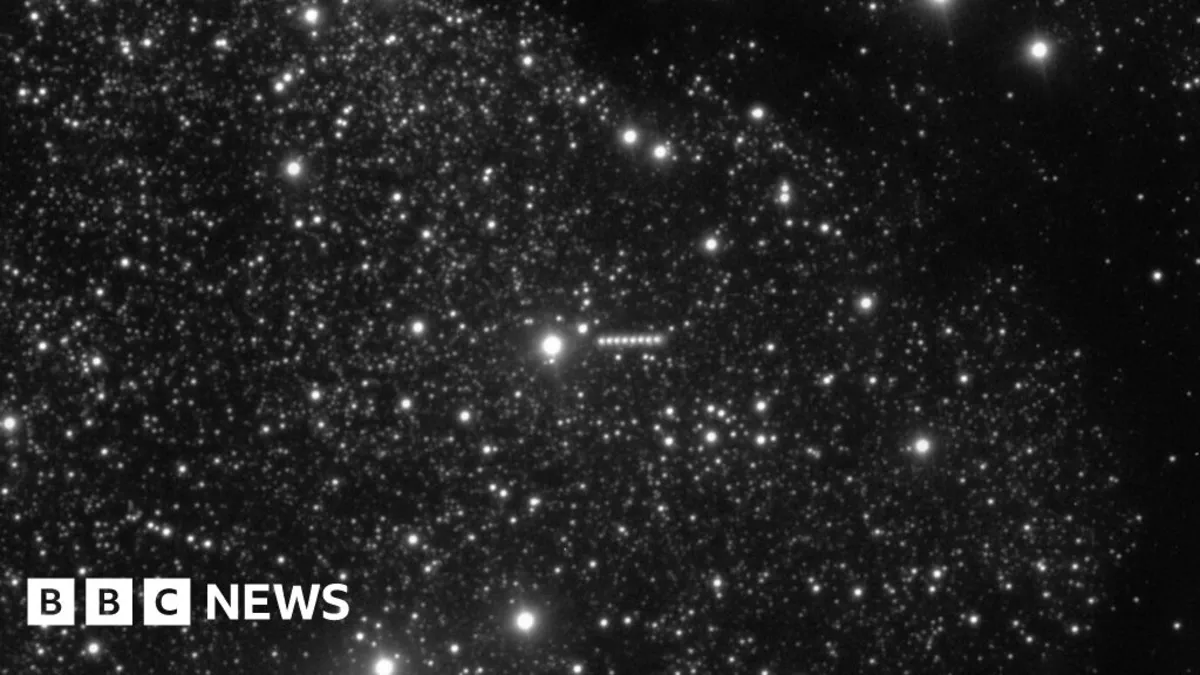
A recently identified interstellar object, designated as 3I/Atlas, has captured the attention of astronomers who believe it could be the oldest comet ever observed. According to a team of scientists from the University of Oxford, this remarkable object may be up to three billion years older than our own solar system.
This discovery marks only the third time astronomers have detected an object originating from beyond our solar system, making it a significant event in the field of astronomy. The preliminary findings regarding 3I/Atlas were shared during the national meeting of the UK's Royal Astronomical Society held in Durham.
University of Oxford astronomer Matthew Hopkins expressed his enthusiasm about the discovery, stating, "We're all very excited by 3I/Atlas." Hopkins, who had just completed his PhD studies at the time of the object's discovery, estimates that it could be more than seven billion years old, potentially making it the most intriguing interstellar visitor to date.
3I/Atlas was first detected on July 1, 2025, by the ATLAS survey telescope located in Chile when it was approximately 670 million kilometers away from the Sun. Since that initial sighting, astronomers worldwide have been diligently working to trace its trajectory and gather more information about this ancient celestial body.
According to Hopkins, the object likely originated from the Milky Way's "thick disk," a region populated with ancient stars that orbit above and below the galactic plane where the Sun and most stars are found. The research team speculates that because 3I/Atlas probably formed around an older star, it is likely composed of significant amounts of water ice.
As 3I/Atlas approaches the Sun later this year, the heat from our star will warm its surface, causing it to release vapor and dust. This process is expected to generate a glowing tail, providing a stunning visual for observers. The researchers employed a model developed by Hopkins to support their findings, indicating that this object originates from a previously unobserved part of our galaxy.
Professor Chris Lintott, a co-author of the study, remarked, "We think there's a two-thirds chance this comet is older than the solar system, and that it's been drifting through interstellar space ever since." This statement underscores the object's importance in understanding the history and evolution of celestial bodies.
Later this year, 3I/Atlas is expected to be visible from Earth through the use of amateur telescopes, offering a unique opportunity for skywatchers and astronomy enthusiasts. Prior to the discovery of 3I/Atlas, only two other interstellar objects had been identified: 1I/'Oumuamua in 2017 and 2I/Borisov in 2019.
As the excitement surrounding 3I/Atlas grows, astronomers worldwide are preparing to utilize a new and powerful telescope in Chile, known as the Vera C Rubin Observatory. Once it begins its full survey of the southern night sky later this year, scientists anticipate discovering between 5 and 50 new interstellar objects, further enhancing our understanding of the cosmos.